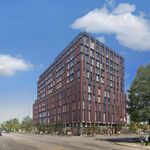^ It is hard to predict the demand on Eglinton route, since it is not known how many people will switch to Eglinton. Will the passengers of buses going from the north switch to Eglinton LRT, or continue all the way to Bloor subway?
Metrolinx's projection predicts < 10,000 pphpd on Eglinton and this is within the LRT capacity; however, do they model the human behavior well? I don't think they analyzed the demand as a function of the LRT speed.
However odd that might sound, good speed of Eglinton LRT might precipitate capacity issues - if too many people switch to Eglinton. The current top demand on Bloor subway is 24,000 pphpd; if 1/2 of them switch to Eglinton and in addition some ridership growth occurs, the demand can exceed the capacity limit. (Let's assume 3-car trains == 500 ppl per train, 2 min headways == 30 trains per hour; then 15,000 pphpd is the capacity limit.)





